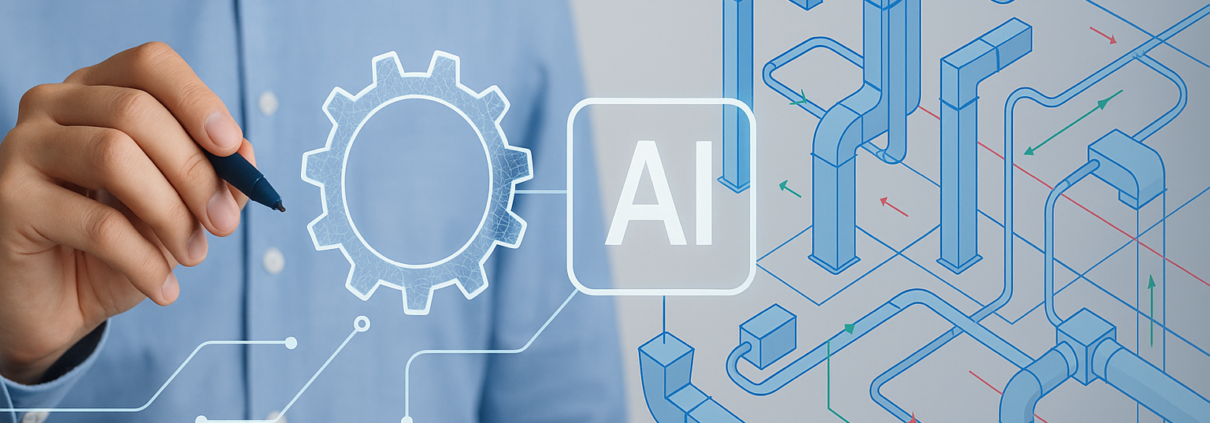Revolutionizing Electrical Design with AI: How AI-Powered Lighting and Electrical Calculations are Changing the Game
Revolutionizing Electrical Design with AI: How AI-Powered Lighting and Electrical Calculations are Changing the Game
In the fast-evolving world of construction and electrical design, the demand for efficiency, accuracy, and innovation has never been higher. Traditional methods of electrical calculations, whether for lighting design or wiring, often rely on manual processes and years of experience. While this has served the industry well in the past, it’s clear that we’re on the brink of a major shift—thanks to Artificial Intelligence (AI).
What is AI-Powered Lighting and Electrical Calculation?
AI-powered lighting and electrical calculation tools harness machine learning and automation to optimize the design process. These advanced algorithms analyze complex building plans, load requirements, and environmental factors to deliver accurate, reliable calculations in a fraction of the time it would take a human. With AI, you can confidently design lighting systems, electrical circuits, and wiring configurations that meet industry standards while maximizing energy efficiency and safety.
How Does AI Benefit Electrical Designers?
- Speed and Efficiency: The most obvious benefit of AI is speed. What could take days or weeks using traditional methods can now be completed in a matter of hours or even minutes. Whether you’re designing a small residential space or a large commercial building, AI can quickly process the data and generate optimal solutions.
- Accurate Load Calculations: Proper load calculation is critical to avoid overloading circuits, ensuring electrical safety, and optimizing energy use. AI algorithms are able to process vast amounts of data and calculate precise load distributions, taking into account the building layout, electrical equipment, lighting needs, and more.
- Compliance with Standards: Navigating complex regulations and codes can be a challenge for electrical designers. AI-based tools are programmed to stay up-to-date with the latest industry standards, ensuring that your designs are compliant with local and international electrical codes and regulations.
- Energy Efficiency: AI isn’t just about making calculations faster—it’s also about optimizing for energy efficiency. AI algorithms consider not only the technical specifications but also environmental factors, ensuring your lighting and electrical systems are as energy-efficient as possible.
- Predictive Maintenance and Future-Proofing: Advanced AI can analyze patterns in electrical usage and anticipate potential issues before they arise. This predictive maintenance capability allows designers to implement solutions that prevent future problems, improving the longevity of the electrical systems and reducing maintenance costs in the long term.
Real-World Applications:
- Commercial Buildings: For large commercial projects, AI can create optimized electrical plans that minimize energy usage while ensuring optimal lighting levels, reducing long-term costs for the building owner.
- Residential Design: AI can also assist in residential lighting design by considering the unique needs of each room or space, adjusting light intensity and layout based on factors like natural light and room usage.
- Industrial Projects: For industrial applications, AI can automate electrical calculations and ensure safety standards are met even in complex environments with high power requirements.
AI in Action: A Step-By-Step Example
Imagine you’re tasked with designing the electrical layout for a new office building. You upload the building’s CAD files or PDF floor plans into an AI-powered design tool. The system automatically identifies key areas—rooms, corridors, and common spaces—and suggests lighting configurations based on industry best practices and energy efficiency guidelines.
The AI then calculates the electrical load for each area, ensuring that circuits are balanced and preventing any overloading. It also takes into account the building’s environmental factors, such as the amount of natural light available, and adjusts the lighting designs accordingly.
In just a matter of minutes, you’ve got a fully optimized lighting and electrical design, complete with compliance checks and energy-saving suggestions, all without having to manually calculate anything. The results are faster, more accurate, and safer than if done manually.
The Future of AI in Electrical Design
As AI continues to evolve, so will its applications in electrical design. From smarter automation to better predictive models and integration with other smart building technologies, AI will only become more integral to how we design and optimize electrical systems. For engineers, architects, and designers, the future of electrical design is not just bright—it’s intelligent.



Leave a Reply
Want to join the discussion?Feel free to contribute!